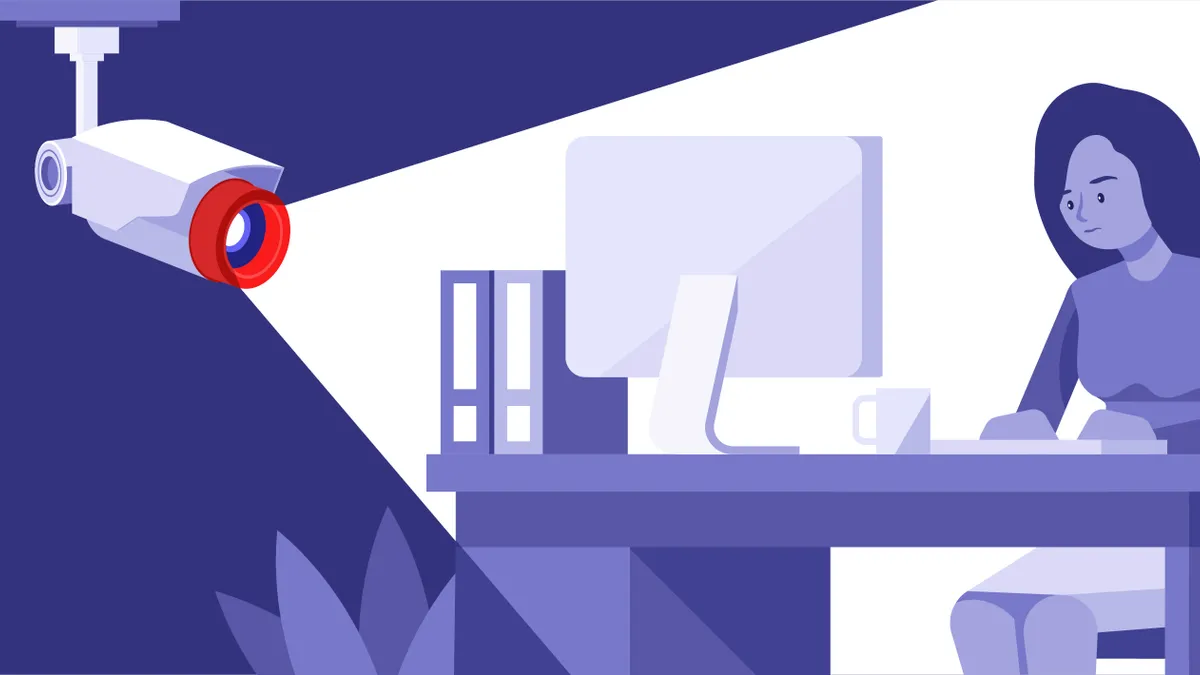Dive Brief:
- A group of 21 advocacy groups want the Occupational Safety and Health Administration to establish a workplace standard for electronic surveillance and algorithmic management. OSHA has the authority to do so because it already regulates hazards to workers’ physical safety and mental health, which are affected by workplace monitoring, the organizations said.
- The group, which includes the Center for Democracy & Technology, a not-for-profit organization promoting human rights in technology policy, sent a letter to the Biden administration Monday outlining its proposals for the OSHA standard, as well as calling for the agency to update existing guidance on workplace injury prevention to include workplace monitoring. The group also recommends the National Institute for Occupational Safety and Health fund research on how employee surveillance affects workers’ physical and mental health.
- “The Biden administration must use its existing authority to better regulate surveillance tech and protect American workers,” Rachael Klarman, executive director at Governing for Impact, an organization promoting pro-worker policies, said in a news release.
Dive Insight:
Worker surveillance has been a point of contention between employees and employers as the practice has grown more prevalent through remote work setups.
Businesses in the U.S. and Europe used more keystroke, webcam, desktop and email monitoring during the COVID-19 pandemic, according to a report produced by the University of St. Andrews and published by the European Commission’s Joint Research Council. But excessive monitoring was found to decrease job satisfaction and commitment to the organization and increase stress and likelihood for turnover. In some cases, workers quit their jobs in protest.
Surveys have shown workers and managers have different attitudes toward employee monitoring. A study released Jan. 26 by 15Five, a performance management vendor, found that 68% of managers believed surveillance tools improved performance, while 72% of employees thought it worsened performance or didn’t have an effect.
Employee surveillance, however, isn’t limited to remote work. JPMorgan Chase and Goldman Sachs both have been reportedly monitoring how often workers are in the office by tracking their access card swipes.














